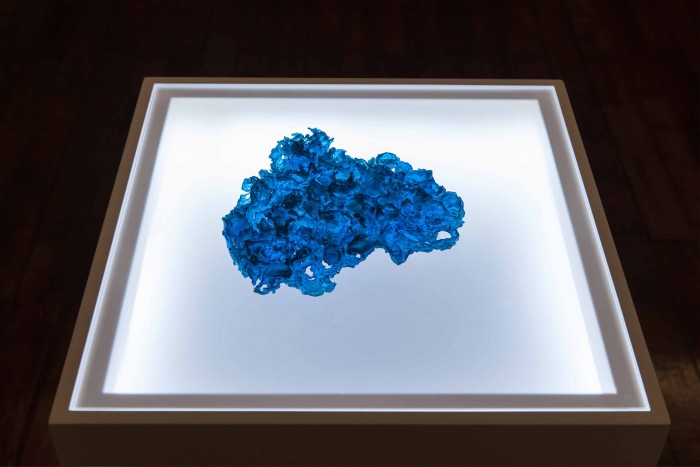








Cast Away, Paiva’s first solo exhibition in Macau, explores the blurred boundary between the archipelago’s urbanised territory and its natural surroundings.
Taking in account the history of the Orient Foundation, a XVIII century house that has historically hosted foreign visitors, as well as Macau and Hong Kong’s colonial pasts, Paiva presents in Cast Away a series of works, which across different mediums, present layers and forms of inquisitive engagement with the physical, geographical and cultural margins he is himself investigating.
At the heart of the exhibition is a new film, Unlimited (2014), which projected on two screens, presents distant images of Google earth and travels across the sea in dialogue with two texts: “Pilgrimage”, a XVI century book that presents an account of the first impressions of Asia by a Portuguese traveller, and “China”, an early XXth century book written by Jaime do Inso in the early years of Portugal’s authoritarian regime. Although the two books are easily distinguishable by the fictional aspect of the former and the scientific accuracy of the latter, in “Unlimited” this difference is blurred; notions of territory, exoticism and mediated veracity are explored through a superposition of different layers of history and visual information.
An acknowledgement to contemporary mapping techniques on the one-hand, the work also serves as a reflection of the areas of travel, and the fetish of the unknown; its vastness now quantifiable by a mere digital search yet previously not so simply accountable. Accompanying this work is a large-scale installation of a sailboat, which appears capsized. Made of fiberglass, the sculpture stands as both a relic of sea- bound travels as well as attests to the arrival of foreigners, both on long-term diplomatic stations as well as on short-term missions.
Tilted to one side so only half of the ship is visible, the sculpture be- comes a shelter, lying surrounded by a fictional sea created by the printing of Google earth mappings onto a carpeted expanse, a detail that both strikes a dialogue with his video work Unlimited and allows the viewer to explore the digitised material at a different level and through an alternative medium. Accompanying these works is a series of paintings and wall sculptures that explore the fabricated spaces of travelling – arrival and departure – in which Paiva addresses the textures, signage and other elements present in both the vessels and the piers, elements that through an exposure to water reveal beneath them coats of time. Other wall sculptures incorporate textured elements from real- life boat safety jackets and seats. Amassed, stripped and repurposed, the pieces of plasticised cloth serve as indexes of the travel one makes today between the archipelago as well as to Macau.
Presented as part of a two-dimensional work, the incorporated elements demand a focus on their use and purpose, while in the wider context of the exhibition, they serve as triggers for making a connection between contemporary sea travel and those modes and methods that have historically taken place. In parallel to these works will be a series, which summates the exhibition title; Paiva presents various cast objects, which he collected from the shores of his home in Hong Kong. Selected and preserved in clear scintillating resin, the final product presents a commentary on that which is shafted versus that which is collected as treasure and also builds a dialogue with the important relics held in the historical Orient Foundation where the exhibition is hosted. Ultimately, the exhibition Cast Away presents a multi-faceted contemplation of not only the site’s urban history but also its wider geographical and cultural context. The exhibition prompts a reflection on con- temporary versus previous travel and from that a wider consideration of previous mapping techniques versus contemporary visibility, hinting at a type of evolution without dictating the precise nature of these norms. Overall, Cast Away bridges a gap between Paiva’s own arrival in Hong Kong, one’s contemporary visitation and our engagement, through modern eyes, with a historically charged environment.